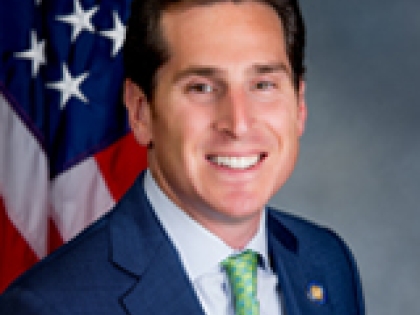
Lawmakers question whether MTA will spend money in proposed plan wisely
MTA leaders tried to assure state lawmakers Tuesday that they plan to wisely spend the $51.5 billion the agency is seeking to maintain and modernize infrastructure — even after acknowledging a growing debt and operational deficits.
The assurances came at a New York State Legislature hearing on the Metropolitan Transportation Authority’s proposed 2020-24 Capital Program, which largely would be funded through state revenues, including from $15 billion in new congestion pricing tolls in Manhattan.
But, “This will not be enough to completely fund our bold vision,” MTA chairman Patrick Foye told the panel of Senate and Assembly members at the Manhattan hearing.
“The reality is that capital investment in the transit system has not kept up with demand,” said Foye, who noted the MTA’s 50 percent increase in ridership over the past 20 years has coincided with an 8 percent decline in the annual rate of capital investment. “That’s had major economic consequences on the region. Our teams deserve immense credit for getting the system to a more reliable place, but we must take decisive action to make sure our system can perform in the long term, so that we remain a driver of the region’s growth.”
The five-year Capital Program includes $5.7 billion in proposed improvements for the Long Island Rail Road, including funding to complete the East Side Access link to Grand Central Terminal, and to advance the construction of the Third Track between Floral Park and Hicksville.
The state’s four-member Capital Program Review Board has yet to get final approval for the plan. At Tuesday's hearing, several lawmakers expressed concern about the MTA’s ability to responsibly spend the money — noting the agency is predicting significant deficits in future years and paying $2.7 billion annually in debt costs. The MTA plans to borrow $9.7 billion to help fund the Capital Program.
Sen. Leroy Comrie (D-Queens) called Tuesday’s hearing “perhaps the most important public forum” to discuss concerns about the plan before it moves forward.
“Everyone is hopeful that the Capital Program can be a turning point for the MTA,” Comrie said.
More information about the MTA’s current, and future, fiscal health is expected when the agency releases the latest update to its four-year financial plan, including its 2020 operating budget, on Thursday.
Previewing the plan for lawmakers, MTA chief financial officer Robert Foran said it will forecast balanced budgets in 2019 and 2020, but deficits in the following years.
“We will have a plan in place to address those out-year deficits as we approach them,” Foran said. “It’s going to be a challenge, but we’ve risen to the challenge before, and I believe we’ll do it again.”
Amid reports of skyrocketing overtime costs and OT abuse among some workers, including at the LIRR, Sen. Todd Kaminsky (D-Long Beach) pressed Foye about how the agency plans to bring OT costs to “something that commuters will find acceptable and reasonable.”
Foye said overtime abusers make up “a relatively small number of employees,” and that some OT is necessary in order to advance “the extraordinary amount of work being done at the Long Island Rail Road.”
“Our challenge … is to minimize it, to make sure we’re not having overtime that is either unnecessary or not worked, and that we’re doing everything we can to be smart about how it’s planned,” Foye said.
Meanwhile, at a separate meeting of the MTA Board’s commuter railroad committee Tuesday, LIRR president Phillip Eng trumpeted the railroad’s latest successful bridge replacement projects. On Monday, the LIRR restored regular service on its Montauk branch, where buses had been replacing trains between Southampton and Montauk for nearly a month as crews replaced a pair of bridges in East Hampton.
The $21 million effort follows several other recent bridge replacement projects, including in Garden City, Westbury and Carle Place — all part of multibillion modernization of the 185-year-old railroad.
Eng said that, over the previous nine years, the bridges that were replaced were involved in 190 incidents of trucks striking them because of their low clearances.
“When these bridges are hit, service is either delayed or comes to a halt,” Eng said. “I can say now that since we’ve done these bridges, we’ve had zero bridge hits. These are indeed elimination of delays, elimination of suspensions and cancellations."
Despite the railroad’s efforts, on-time performance fell in October. The railroad operated 91.8 percent of its trains on time last month — down from 93.2 percent in October 2018.
Through October, the LIRR’s on-time performance this year has been 92.5% — an improvement over 90.5% through October 2018.